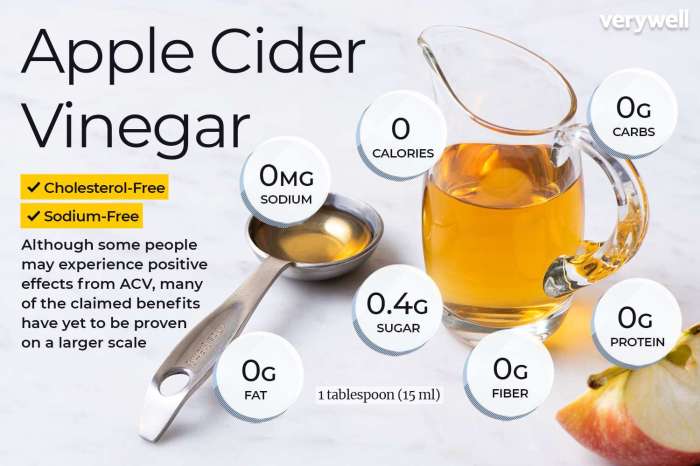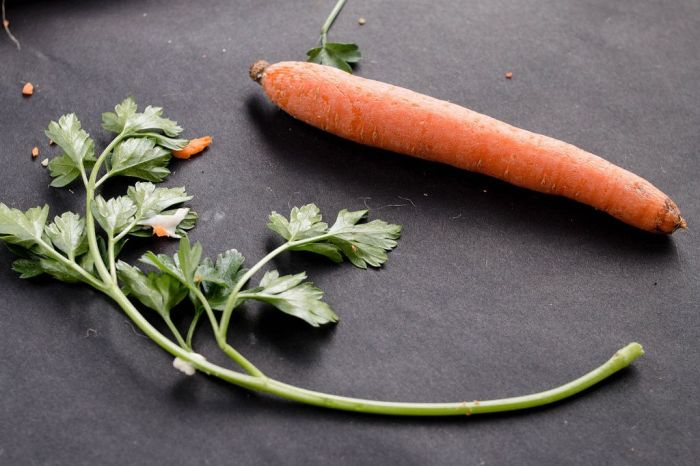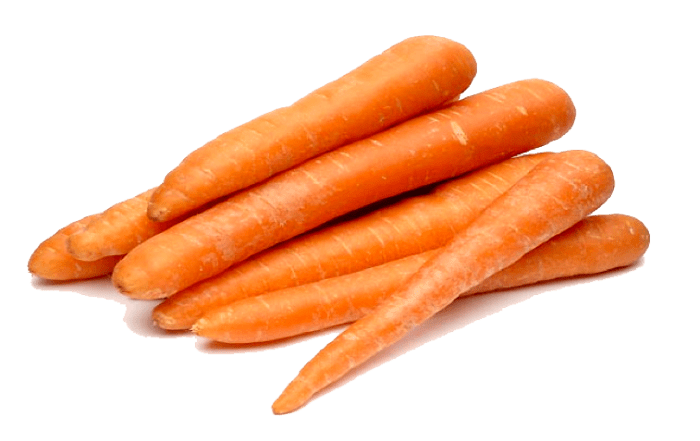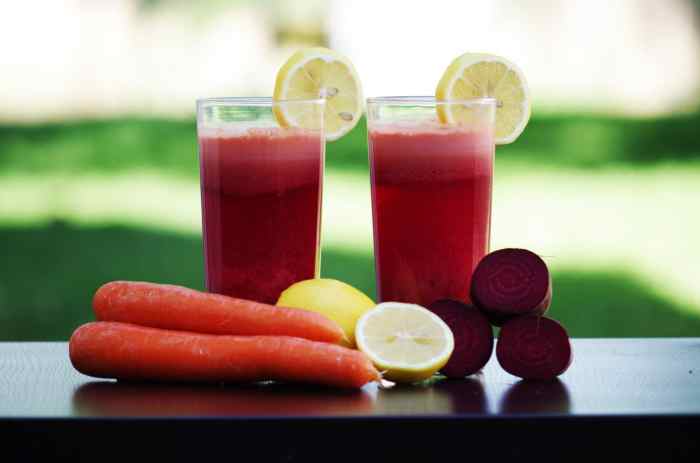Apple cider vinegar shots are popping up everywhere, promising a range of health benefits. This guide dives deep into everything you need to know about these trendy drinks, from preparation methods and potential health effects to potential risks and alternatives. We’ll explore the history of using apple cider vinegar, the various types used, and even examine the cultural and social factors behind their popularity.
Whether you’re a seasoned health enthusiast or just curious about this trend, this comprehensive overview will provide a balanced perspective on apple cider vinegar shots. We’ll discuss the purported benefits and the potential downsides, offering a thorough examination of this intriguing beverage. Get ready to discover if these shots are a healthy addition to your routine or a trend best left behind.
Introduction to Apple Cider Vinegar Shots
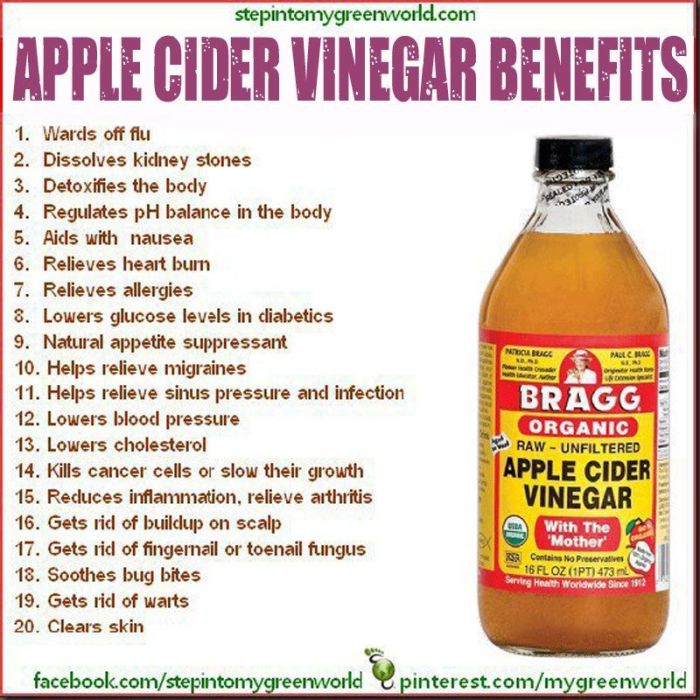
Apple cider vinegar shots have gained popularity as a purported health and wellness remedy. These potent little drinks are often consumed as a means to boost metabolism, aid digestion, and potentially even support weight management. However, it’s crucial to remember that individual experiences and responses may vary. This exploration dives into the fundamentals of apple cider vinegar shots, examining their preparation, ingredients, and historical context.Understanding the components and preparation methods behind apple cider vinegar shots is essential for informed consumption.
This includes knowing what types of apple cider vinegar are commonly used, and how the shots are typically prepared. This knowledge can help consumers make educated choices about their health and wellness practices.
Definition of Apple Cider Vinegar Shots
Apple cider vinegar shots are small doses of apple cider vinegar, often diluted with water or other liquids, consumed orally. They are typically intended to be consumed quickly and are intended to offer various health benefits. The specific ingredients and dilution ratios can vary widely depending on the recipe or personal preference.
Common Preparation Methods
Several methods exist for preparing apple cider vinegar shots. A simple approach involves mixing a tablespoon of apple cider vinegar with a glass of water. More elaborate recipes may include other ingredients like honey, lemon juice, or even spices for flavor and perceived health benefits. The preparation method influences the final taste and perceived impact.
Typical Ingredients Used
The core ingredient in apple cider vinegar shots is, of course, apple cider vinegar. Other common additions include water, honey, lemon juice, and sometimes spices like ginger or cinnamon. These additions serve to balance the sharp taste of the vinegar and enhance the perceived health benefits of the drink. The precise amount of each ingredient can vary considerably.
Historical Context and Origins of Apple Cider Vinegar in Drinks
The use of apple cider vinegar in drinks dates back centuries. Traditional remedies and folk practices have long incorporated apple cider vinegar into various beverages, often associated with digestion and health. While the modern popularity of shots is more recent, the historical roots in folk medicine are noteworthy.
Comparison of Apple Cider Vinegar Types
| Type of Apple Cider Vinegar | Description | Potential Benefits (Note: Not Scientifically Proven) | Potential Drawbacks |
|---|---|---|---|
| Raw, Unfiltered Apple Cider Vinegar | Contains the “mother” (a cloudy protein substance), and has a slightly tangier flavor. | Potentially higher in beneficial enzymes and probiotics. | May have a stronger taste and more sediment. |
| Filtered Apple Cider Vinegar | Processed to remove the “mother” and sediment, resulting in a clearer liquid. | Often perceived as smoother and easier to consume. | May have fewer beneficial microorganisms. |
| Organic Apple Cider Vinegar | Made from organically grown apples. | Potentially lower in pesticides and other contaminants. | May have a slightly higher price point. |
This table highlights the distinctions between different types of apple cider vinegar, providing a comparative overview of their characteristics, potential benefits (though these are not scientifically proven), and drawbacks. Choosing the right type of apple cider vinegar depends on personal preferences and desired attributes.
Potential Health Benefits and Claims
Apple cider vinegar shots have gained popularity for their purported health benefits, often touted for weight loss, improved digestion, and blood sugar control. However, the scientific evidence supporting these claims is mixed, and the long-term effects are still largely unknown. This section will explore the potential benefits, the existing scientific backing, comparisons with similar drinks, and potential downsides of incorporating apple cider vinegar shots into a healthy lifestyle.The allure of quick fixes and natural remedies often fuels the popularity of such products.
While apple cider vinegar may hold some potential, it’s crucial to approach such claims with a critical eye, understanding the limitations of the available research and the importance of a balanced diet and lifestyle.
Purported Health Benefits
Many proponents claim apple cider vinegar shots can aid in weight management, improve digestion, and regulate blood sugar levels. These claims are often based on anecdotal evidence and limited scientific studies. It’s essential to remember that correlation does not equal causation. While some studies show promising results in specific populations, more rigorous and long-term research is necessary to establish definitive conclusions.
I’ve been experimenting with apple cider vinegar shots lately, and while they seem to have some potential health benefits, I’m also keen to explore other ways to manage my health conditions. For instance, if you’re looking for effective asthma treatments, you might find some helpful information on the different options available, like symbicort, dulera, advair, and breo, in this resource about symbicort dulera advair and breo to treat asthma.
Ultimately, I’m still on the quest to find the best natural and medical approaches to wellness, and apple cider vinegar shots are definitely part of that exploration.
Scientific Evidence
While some studies suggest potential benefits, the scientific evidence supporting the widespread claims surrounding apple cider vinegar shots is often limited and not conclusive. Studies on the effects of apple cider vinegar on weight loss, for instance, often show small, inconsistent results, with some demonstrating a marginal impact on body weight and others showing no significant difference compared to placebo groups.
Comparison with Similar Drinks
Compared to other drinks touted for similar health benefits, like lemon water or green tea, apple cider vinegar shots offer no clear advantage. Each beverage has its own set of potential benefits and drawbacks. A balanced approach to hydration and nutrition, including a variety of fruits, vegetables, and whole grains, remains the most effective strategy for achieving overall well-being.
Effects on Blood Sugar Levels
Apple cider vinegar is believed to help regulate blood sugar levels by slowing the absorption of glucose into the bloodstream. Some studies suggest that it may lower post-meal blood sugar spikes, but the impact on overall blood sugar control is still under investigation. It’s important to consult with a healthcare professional before incorporating apple cider vinegar shots into a diabetes management plan.
Potential Interactions with Medications or Health Conditions
Apple cider vinegar may interact with certain medications, particularly those affecting blood sugar levels or kidney function. For example, taking apple cider vinegar with medications that lower blood sugar could lead to hypoglycemia. Additionally, individuals with existing kidney conditions should consult their doctor before using apple cider vinegar regularly.
Potential Side Effects and Precautions
| Potential Side Effects | Precautions |
|---|---|
| Gastrointestinal issues (heartburn, nausea, stomach upset) | Start with a small amount and gradually increase dosage. Drink with water. |
| Dental erosion | Rinse mouth with water after consumption. |
| Interactions with medications | Consult a healthcare professional before use if taking other medications. |
| Allergic reactions | Stop use immediately if any allergic symptoms appear. |
| Kidney problems | Individuals with pre-existing kidney conditions should consult their doctor. |
The table above highlights some of the potential side effects and precautions to consider when incorporating apple cider vinegar shots into your routine. Always prioritize your health and consult a healthcare professional before making significant dietary changes.
Potential Risks and Side Effects
While apple cider vinegar shots offer potential health benefits, it’s crucial to understand the associated risks and potential side effects. Uncontrolled consumption, especially in high doses, can lead to adverse reactions. Knowing these potential pitfalls is essential for responsible use and to make informed decisions about incorporating this supplement into your routine.
Potential Gastrointestinal Issues
Consuming apple cider vinegar, even in diluted forms, can irritate the sensitive lining of the esophagus and stomach. This can manifest as heartburn, nausea, and abdominal discomfort. These symptoms are often dose-dependent, meaning higher doses of apple cider vinegar increase the likelihood and severity of these issues. For individuals with pre-existing gastrointestinal conditions, like acid reflux or ulcers, the risks are even greater.
Carefully consider the potential discomfort and how it might interact with existing health issues.
Dental Concerns
The high acidity of apple cider vinegar can erode tooth enamel over time. Regular consumption of undiluted or insufficiently diluted apple cider vinegar shots can contribute to tooth sensitivity, cavities, and even damage to dental restorations. This effect is cumulative, meaning the longer and more frequently you consume apple cider vinegar, the greater the potential risk. Proper oral hygiene, including brushing and flossing after consumption, can mitigate these risks, but it’s not a complete solution.
Risks of Excessive Consumption
Excessive consumption of apple cider vinegar can lead to a range of side effects beyond gastrointestinal issues. These can include electrolyte imbalances, potentially affecting potassium levels, and may impact blood sugar regulation in susceptible individuals. The risk of adverse reactions increases significantly with high dosages. It’s crucial to adhere to recommended dosages and consult a healthcare professional for guidance.
Be cautious about the potential effects of exceeding recommended intake.
Importance of Professional Consultation
Before incorporating apple cider vinegar shots into your routine, it’s essential to consult with a healthcare professional. They can assess your individual health status, including any pre-existing conditions, and determine if apple cider vinegar shots are suitable for you. This assessment is critical to understanding how the product may interact with your specific medical needs and current medications.
Apple cider vinegar shots are trending, but what about their potential impact on gut health? While the benefits are often touted, understanding the potential side effects and dosage is key. For example, incorporating glucomannan into your diet might be beneficial, but careful consideration of glucomannan benefits side effects dosage is important. Ultimately, it’s essential to approach any dietary supplement cautiously, including apple cider vinegar shots, and consult with a healthcare professional before adding them to your routine.
Their expertise can help prevent potential complications.
Comparing Risks and Benefits
The benefits of apple cider vinegar shots, like weight management or improved digestion, must be weighed against the potential risks. While some individuals might experience positive outcomes, others may encounter significant side effects. The decision to use apple cider vinegar shots should be based on a comprehensive understanding of both the potential advantages and disadvantages. Carefully consider the potential implications before taking action.
Potential Side Effects Table
| Symptom | Potential Cause |
|---|---|
| Heartburn | High acidity of apple cider vinegar irritating the esophagus |
| Nausea | Irritation of the stomach lining by apple cider vinegar |
| Abdominal discomfort | Irritation of the gastrointestinal tract from apple cider vinegar |
| Tooth sensitivity | Erosion of tooth enamel due to the acidity of apple cider vinegar |
| Electrolyte imbalance | Excessive consumption of apple cider vinegar, potentially affecting potassium levels |
Preparation and Usage: Apple Cider Vinegar Shots
Making apple cider vinegar shots part of your routine can be a powerful way to potentially support your health goals. Proper preparation and usage are crucial for maximizing potential benefits and minimizing any potential risks. Understanding the right steps, recipes, and dosage is key to experiencing the benefits effectively.
Preparation Steps
The preparation of apple cider vinegar shots is straightforward. Precise measurements and proper storage are important to ensure quality and safety. Follow these steps carefully for optimal results.
| Step | Action | Image Description |
|---|---|---|
| 1 | Gather Ingredients | A clear glass jar or measuring cups, a bottle of apple cider vinegar, and a teaspoon are visible on a white surface. Optional ingredients like honey, lemon juice, or other flavorings may also be present. |
| 2 | Measure Ingredients | The apple cider vinegar is measured using a measuring spoon or cup. The precise amount will depend on the recipe and dosage. Any added flavorings are also measured. |
| 3 | Combine Ingredients | The apple cider vinegar and any added ingredients are gently mixed in the container. The container should be clean and dry to avoid contamination. |
| 4 | Chill or Refrigerate | The mixture is placed in the refrigerator to cool completely. The chilled temperature will enhance the taste and improve the overall experience. |
| 5 | Portion and Store | The chilled mixture is carefully portioned into small, individual containers, like shot glasses. The containers are then placed in the refrigerator for further storage. |
Recipes and Variations
There are several delicious and versatile recipes for apple cider vinegar shots, catering to various tastes.
- Classic Apple Cider Vinegar Shot: Simply mix 1 tablespoon of apple cider vinegar with 8 ounces of water. This basic recipe is excellent for beginners.
- Ginger Zing: Add a small piece of fresh ginger to the mixture for an invigorating kick. This combination is ideal for those who enjoy spicy flavors.
- Sweet and Tart: Combine 1 tablespoon of apple cider vinegar with a teaspoon of honey and a squeeze of fresh lemon juice for a balanced flavor profile. This is a popular option for those who prefer a sweeter taste.
Ideal Temperature and Storage
For optimal flavor and safety, store prepared shots in the refrigerator. Cold temperatures help maintain the quality of the ingredients and prevent bacterial growth. Serve chilled.
Dosage for Different Age Groups
Dosage recommendations vary depending on age and individual health conditions. It’s crucial to consult with a healthcare professional before starting any new supplement regimen, especially for children and individuals with underlying health concerns. A general guideline for adults is 1 tablespoon per serving, but this may differ based on individual needs.
Ideal Consumption Time
Ideally, consume apple cider vinegar shots on an empty stomach, 30 minutes before a meal. This timing allows the vinegar to potentially interact with the body in a way that may support digestion and other health goals. It’s important to note that everyone’s body is different, and the ideal time may vary.
Alternatives and Substitutes
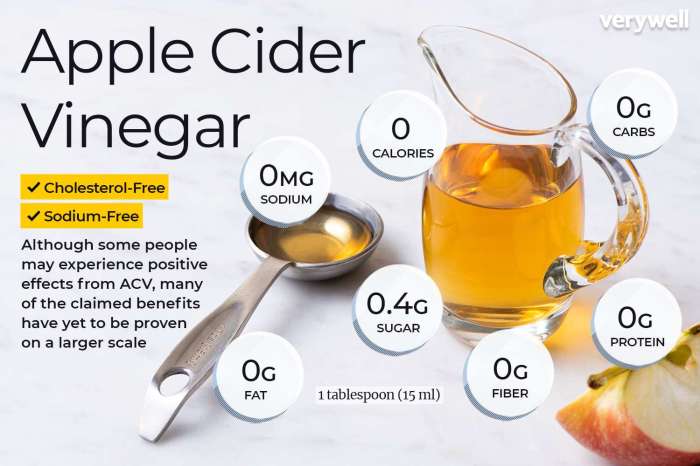
Apple cider vinegar shots, while touted for potential health benefits, might not be suitable for everyone. Fortunately, there are several alternative drinks that can provide similar flavor profiles and potential health advantages. This exploration will delve into these alternatives, comparing their nutritional content, ingredients, taste, and texture to help you make informed choices about your health and wellness journey.Exploring alternatives to apple cider vinegar shots allows for a wider variety of options, ensuring a balanced and diverse approach to achieving a healthy lifestyle.
These options can cater to individual preferences, dietary restrictions, and health goals.
Potential Alternatives
Several beverages offer similar potential health benefits to apple cider vinegar shots, albeit with different compositions and flavors. These alternatives often incorporate ingredients known for their positive impacts on digestion, metabolism, and overall well-being. Important considerations include the nutritional profiles and potential side effects of each alternative.
- Kombucha: This fermented tea beverage contains probiotics, which are beneficial bacteria that support gut health. Kombucha is known for its tangy and slightly fizzy flavor, often described as a slightly effervescent and refreshing drink. The nutritional content varies depending on the specific recipe and brand. Some varieties may contain added sugars, so careful selection is important.
- Ginger Ale: Ginger is well-known for its digestive properties and potential anti-inflammatory effects. Ginger ale, while not as rich in probiotics as kombucha, offers a refreshing and subtly spicy flavor. The nutritional content of ginger ale is typically low, primarily consisting of water, sugar, and ginger. Choosing sugar-free options is crucial for maintaining a balanced diet.
- Electrolyte Drinks: Electrolyte drinks are a good source of minerals like potassium, sodium, and magnesium. These are essential for hydration and muscle function. Electrolyte drinks often come in various flavors, ranging from fruity to more neutral options. The nutritional profile depends on the specific ingredients, with some options being high in sugar. Selecting low-sugar or naturally sweetened alternatives is essential for maintaining a balanced diet.
- Fruit Infused Water: This simple and refreshing alternative offers a low-calorie way to stay hydrated. Adding fruits like lemon, cucumber, or berries to water infuses it with natural flavor and vitamins. Fruit infused water is naturally low in calories and sugar, making it a suitable choice for those looking for a light and healthy beverage.
Nutritional Profiles of Alternatives
The nutritional content of alternative drinks varies significantly. The concentration of vitamins, minerals, and antioxidants will vary widely between choices, making it important to read labels and compare.
- Kombucha: May contain probiotics, but sugar content can vary significantly. It also may contain caffeine.
- Ginger Ale: Low in calories and nutrients, with sugar content depending on the brand. May provide a modest amount of ginger, but it’s generally not a primary source of vitamins or minerals.
- Electrolyte Drinks: High in electrolytes but can also be high in sugar. Choose brands with low-added sugar.
- Fruit Infused Water: Low in calories and sugar, but provides vitamins and antioxidants from the fruits.
Ingredients in Similar Drinks
Many similar drinks use natural ingredients known for their health benefits. Common ingredients include probiotics (in kombucha), ginger (in ginger ale), and natural fruit extracts (in infused water).
Taste and Texture Comparison
The taste and texture of these alternatives vary widely. Kombucha often has a tangy, fermented flavor and a slightly fizzy texture. Ginger ale offers a refreshing, slightly spicy flavor, and a bubbly texture. Electrolyte drinks usually have a sweeter taste and smooth texture, while fruit infused water offers a refreshing and light flavor depending on the fruit used.
Importance of Healthy Lifestyle
While these alternatives can provide some potential benefits, they shouldn’t replace a balanced and healthy lifestyle. A diet rich in fruits, vegetables, and whole grains, combined with regular exercise, is crucial for overall health and well-being.
Comparison Table
| Alternative | Nutritional Profile | Taste & Texture | Potential Benefits |
|---|---|---|---|
| Apple Cider Vinegar Shots | Low in calories, high in acidity | Tart, liquid | Potential digestive aid, potential blood sugar regulation |
| Kombucha | Probiotics, variable sugar | Tangy, slightly fizzy | Gut health support |
| Ginger Ale | Low in nutrients, variable sugar | Refreshing, slightly spicy | Potential digestive aid |
| Electrolyte Drinks | Electrolytes, variable sugar | Sweet, smooth | Hydration, electrolyte replenishment |
| Fruit Infused Water | Low in calories, vitamins/antioxidants | Refreshing, fruity | Hydration, antioxidants |
Cultural and Social Context
Apple cider vinegar, a staple in many cultures, has been utilized for centuries for culinary and medicinal purposes. Its current resurgence, particularly in the form of shots, is a product of various social and cultural factors, including the rise of health and wellness trends, the accessibility of information, and the marketing of specific products. Understanding this context provides a more comprehensive view of its popularity and integration into modern lifestyles.This section explores the diverse cultural significance of apple cider vinegar, examining its role in various cuisines and traditional remedies.
It further investigates the popularity of apple cider vinegar shots across different social groups, and how these shots are incorporated into existing dietary patterns. Moreover, it analyzes the impact of social media trends and marketing strategies in shaping the current perception of apple cider vinegar shots, ultimately assessing their cultural and social implications.
Cultural Significance in Different Regions
Apple cider vinegar has a long history of use across different cultures. Its culinary applications range from preserving food to adding flavor to dishes. Traditional medicine systems in various regions also incorporate apple cider vinegar for a variety of purposes. This diverse cultural application contributes to the product’s appeal in the present day.
| Region | Cultural Significance |
|---|---|
| East Asia (e.g., Japan, China) | Historically used in cooking and traditional medicine, often incorporated into fermented food preparations. Recent popularity in the form of shots is driven by health trends mirroring those in the West. |
| Europe (e.g., France, Germany) | Vinegar, including apple cider vinegar, has a long history of use in pickling, sauces, and dressings. Modern usage often reflects the focus on culinary traditions and health consciousness. |
| North America (e.g., United States) | Vinegar is common in cooking. The rise of apple cider vinegar shots reflects the wider health and wellness movement, often associated with specific diet plans. |
| South America (e.g., Mexico, Brazil) | Vinegar is part of the culinary landscape in many Latin American countries, often used in marinades and sauces. Integration of apple cider vinegar shots is likely influenced by global health trends. |
Popularity Among Different Social Groups
The appeal of apple cider vinegar shots transcends demographics. Its popularity is evident across various social groups, including health enthusiasts, dieters, and those interested in natural remedies. This diverse appeal reflects the broad appeal of health and wellness trends.
- Health enthusiasts often view apple cider vinegar as a natural remedy for various ailments, drawing on anecdotal evidence and social media promotion.
- Dieters incorporate apple cider vinegar shots into their weight loss strategies, believing they can aid in digestion and metabolism.
- Those interested in natural remedies frequently incorporate apple cider vinegar shots into their health routines, viewing them as a way to support their well-being.
Integration into Diets
Apple cider vinegar shots are frequently integrated into various diets, often as part of a broader health and wellness routine. This integration is influenced by a desire for natural health solutions and a focus on dietary optimization.
Apple cider vinegar shots are a trendy health fix, but have you considered the potential benefits of moon milk? It’s a calming beverage with various health advantages, much like apple cider vinegar shots can help with digestion. Learning more about the health benefits of moon milk can lead to a better understanding of potential synergies with apple cider vinegar shots for overall wellness.
health benefits moon milk Ultimately, exploring different health practices can open up new avenues for boosting your well-being, and apple cider vinegar shots might just be a great complement to this.
- Some individuals incorporate apple cider vinegar shots into intermittent fasting regimens, aiming to enhance the benefits of this dietary approach.
- Others include apple cider vinegar shots as part of their detoxification routines, believing they aid in removing toxins from the body.
- Many incorporate apple cider vinegar shots into their morning routines, aiming to boost energy levels and support digestive health.
Social Media Trends and Marketing, Apple cider vinegar shots
Social media plays a significant role in shaping the perception and popularity of apple cider vinegar shots. Targeted marketing strategies leverage influencers and online communities to promote the product and foster a sense of community.
- Influencers often feature apple cider vinegar shots in their health and wellness content, creating a demand for the product amongst their followers.
- Targeted advertisements on social media platforms highlight the perceived health benefits and potential weight loss outcomes of apple cider vinegar shots.
- Online communities dedicated to health and wellness often discuss apple cider vinegar shots, fostering a sense of shared experience and promoting its use.
Cultural and Social Impact
The widespread adoption of apple cider vinegar shots reflects a growing trend towards natural health solutions and personalized wellness routines. The integration of these shots into various cultures and social groups has significant cultural and social implications. This trend signifies a shift in societal perceptions regarding health and well-being.
Nutritional Information
Apple cider vinegar shots, while touted for potential health benefits, are often consumed in small quantities. Understanding their nutritional profile is crucial for anyone considering them as part of a healthy diet. This section delves into the nutritional content, highlighting the presence of vitamins, minerals, and other nutrients, and compares their value to similar drinks. It also explores the potential caloric and macronutrient implications and emphasizes the importance of a balanced diet when incorporating any new food or beverage.
Nutritional Content of Apple Cider Vinegar Shots
The nutritional value of apple cider vinegar shots varies significantly depending on the recipe. They are typically diluted with water or other liquids, which impacts the final nutrient profile. The vinegar itself, often derived from apples, contributes trace amounts of various nutrients. Key factors influencing the nutritional composition include the type of apple cider vinegar used, the amount of added ingredients, and the specific recipe.
Vitamins, Minerals, and Other Nutrients
Apple cider vinegar shots, in their purest form, typically contain minimal amounts of vitamins and minerals. These are usually present in the vinegar’s source (the apples), but their presence in a diluted shot form might be negligible. While not a significant source of these nutrients, some recipes might incorporate additional ingredients (e.g., honey, fruit juices) that contribute more substantial amounts of vitamins, minerals, and antioxidants.
Comparison with Similar Drinks
Comparing apple cider vinegar shots to other beverages reveals their limited nutritional profile. For example, fruit juices or smoothies typically provide higher amounts of vitamins, minerals, and antioxidants. Sports drinks or energy drinks often focus on electrolytes and carbohydrates. Understanding the nutritional differences helps one make informed decisions about their beverage choices.
Potential Calories and Macronutrients
The caloric and macronutrient content of apple cider vinegar shots is generally low, primarily due to the dilution process. However, added ingredients can impact these values. A shot of undiluted apple cider vinegar, for example, might contain a small amount of calories and a negligible amount of carbohydrates, protein, and fat. It is crucial to consult the specific recipe for a precise breakdown.
Importance of a Balanced Diet
It’s essential to remember that no single food or drink, including apple cider vinegar shots, can replace a balanced diet. A comprehensive approach to nutrition, encompassing a wide variety of fruits, vegetables, lean proteins, and whole grains, is crucial for overall health and well-being. Apple cider vinegar shots should be considered a supplementary component, not a dietary foundation.
Nutritional Breakdown of Different Recipes
| Recipe | Calories (approx.) | Protein (g) | Carbohydrates (g) | Fat (g) |
|---|---|---|---|---|
| Plain Apple Cider Vinegar Shot (1 oz) | 5 | 0.1 | 0.5 | 0 |
| Apple Cider Vinegar Shot with Honey (1 oz) | 10 | 0.1 | 1 | 0 |
| Apple Cider Vinegar Shot with Lemon & Water (1 oz) | 2 | 0.1 | 0.1 | 0 |
Note: These are approximate values and may vary based on specific ingredients and preparation methods.
Ultimate Conclusion
In conclusion, apple cider vinegar shots offer a fascinating blend of purported health benefits and potential risks. While some claim significant improvements in various aspects of health, it’s crucial to approach these claims with a critical eye, balancing the hype with scientific evidence. We’ve examined the potential benefits, explored the possible downsides, and even delved into the cultural and social contexts surrounding these shots.
Ultimately, making informed choices about your health and diet requires careful consideration of all aspects, including potential interactions with existing medications and the importance of consulting with healthcare professionals.
